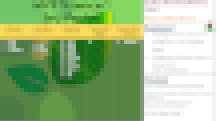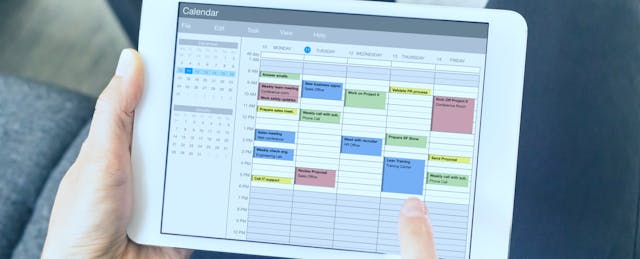When we decided that we’d be giving our sixth-grade students control over their own learning this year, our colleagues told us we were crazy. Middle schoolers, they warned us, are unable to work at their own pace because they lack academic fundamentals, intrinsic motivation and basic time management skills. This is especially true for sixth graders, they said, who are managing a challenging transition to middle school and lack independence.
We’d heard these arguments before but we weren’t convinced. And over the past year, we’ve found just the opposite. It turns out young adolescents are extremely capable of engaging in self-paced, blended learning. In fact, the traditional way of teaching was what wasn’t working for us.
Last summer, we, along with other members of the sixth grade teaching staff at our school, adopted the Modern Classrooms model. Similar to the flipped classroom, the model is an approach based on blended learning, self-paced instruction, and mastery-based grading.
Before, our students were completely dependent on the teacher. As our colleagues pointed out, they lacked intrinsic motivation and independent work skills. The new model, however, moves direct instruction to interactive video and relies on the students to direct their own work pace, freeing us up to differentiate more. We enrolled in the fellowship program, which began with a one-week training in the summer of 2019, put on by the nonprofit that developed the model, and extended into coaching throughout the current school year.
It turned out that our sixth-grade English and science classes thrived under the model. These three key practices—blended learning, self-pacing, and mastery-based grading—not only support each student at their specific level, but also prevent misunderstandings or absences from compounding over the course of the year. When a student misses a concept, they can go back and revise before moving on. This model pushed our sixth graders to be responsible for their own learning by using a pacing tracker, asking other students for assistance and reflecting on their performances.
What We Know About Middle School
When 2020 suddenly became the year of distance learning around the world, our students were better prepared than most to handle it. Despite being used to physical school, they had practice in both real-time, or synchronous, and self-paced, or asynchronous, learning. While most educators scrambled to shift gears, we found ourselves able to transition fluidly. We even had some extra time to help out our colleagues.
So it’s worth asking whether the narratives we hear about early adolescents’ lack of self-control fit with what we know from education psychology. Experts agree that kids experience huge physical and emotional changes from ages 10-14. However, they don’t experience these changes all at once, and certainly not on the same timetable.
On the contrary, maturity levels vary widely during this time. Developmental psychologist Jean Piaget theorized that children learn to think in abstractions and hypotheticals around age 12, but as any middle-school teacher can tell you, 12-year-olds vary in their ability to do this. Some are extremely concrete thinkers, while others can entertain deep scientific thinking. Similarly, psychologist Lev Vygostky theorized that early adolescents experience different levels of readiness depending on the day and task, and that they must develop as human beings before they can learn certain concepts. And, of course, many female students mature sooner than their male peers, which often puts them at an advantage in a traditional middle school classroom.
We also know that middle schoolers are peer obsessed. Psychologist Erik Erikson theorized that students this age are heavily influenced by their peers, and more recent research suggests that students between 10-14 are least adept at resisting peer pressure. In general, this is an overwhelming time in which students need caring adult relationships and need to believe they will do well in school. Perhaps more than any other group of learners, middle schoolers benefit from a more individualized approach.
For all of these reasons, a blended, self-paced classroom format like the Modern Classrooms model is ideal for young middle school students. This model allows educators to:
- Teach to a huge range of physical, mental, and emotional maturity levels.
- Capitalize on peer obsessions in a positive way.
- Care for and support students when they most need it.
Here’s how we do this in our own sixth grade classrooms.
Teaching to a Range of Maturity Levels
By definition, a self-paced model allows for more differentiation. Students who are less prepared or who work more slowly will move at a slower pace and gain only the essential knowledge. Students who are ready for advanced content can fly through deeper extensions.
Take a student of ours named Layla. At the beginning of the year, Layla and her parents were concerned that her classes would be too easy for her; she had excelled at everything in elementary school and is both self reflective and motivated. Self-directed learning provides Layla with the freedom to advance at her own pace, and during remote learning she’s been completing rigorous extension work and mentoring struggling students.
In effect, this has freed us to focus on students’ self-management skills. Since we no longer need to lecture in class each day, our attention has shifted to coaching students like Layla in how to collaborate, manage time wisely, plan ahead and reflect on their progress. In other words, how students are learning and how they can improve.
That was certainly the case with Chris, a student who struggles to stay on task, is constantly moving and needs frequent reminders to complete assignments. During remote learning, it has been important for us to structure his activity through virtual check-ins. In a traditional classroom, Chris would either be relegated to the back of the class while the other students progressed around him, or he would draw the majority of the teacher’s time during a lesson, slowing down the pace of the entire class. Now, he asks for assistance when he notices his struggles, reflects on how he can make progress and creates personalized goals. Chris is not ready to lead his own learning yet, but our model allows the teacher to support his growth as he learns how to learn.
Capitalizing on Peer Obsessions in a Positive Way
One of the strategies proving useful for students like Chris is the pacing tracker, a signature component of the model, which provides a positive channel for middle school students’ peer obsession. In short, it shows where every student is in relation to mastering necessary standards.
At the beginning of the year, the pacing tracker is explained as a way to measure everyone’s progress. Critically, it is framed as a means to support one another; it’s collaborative rather than competitive, and explicit number grades are not posted publicly. Rather, the pacing tracker keeps the focus on mastery and revision. Students can see who is a peer expert (or “lesson superstar,” as we call it), as well as who needs help with revising a previous lesson. This system can help a student like Chris feel comfortable asking Layla for help because she has already mastered the content.

Caring for Students When They Need It
Sixth graders are going through so many scary transitions that they need really caring adult relationships. And big changes like remote learning have increased student anxiety across the world. The Modern Classrooms model gives both teachers and students the time to build those relationships and reduce that anxiety. For instance, we often use what’s known as a “weather-check do now”—or a slip of paper that asks students how they’re feeling and what assignments they plan to work on that day. It’s simple but it gives us an efficient way to check in with each student at the beginning of class. Later, when we work with students in small groups, we get the chance to address those social-emotional needs before pushing through.
Part of what the pacing tracker and weather-checks do is help us teach students to envision future success—what they will accomplish—and how they’ll do it. What students need to master is always clearly defined in each lesson, but they contain tiered levels.There are tasks that are must dos, of course, but also should dos and aspire-to-dos. The transparency—knowing exactly what lesson and mastery check is due each day or week—helps kids feel more in control of their learning.
We’ve often observed that if we continue to treat young adolescents with the mindset that they can’t handle it, then we’re not holding them to the standard they deserve. Through hard work, experimentation and ongoing professional development, we have seen successful academic learning along with personal growth in each of our students. Our new approach removes the blinders and preconceived notions about middle schoolers’ lack of life skills. With this new mindset, we’re liberating each student’s potential, enabling them to grow both academically and personally. To us, that’s how a real modern classroom should look.


